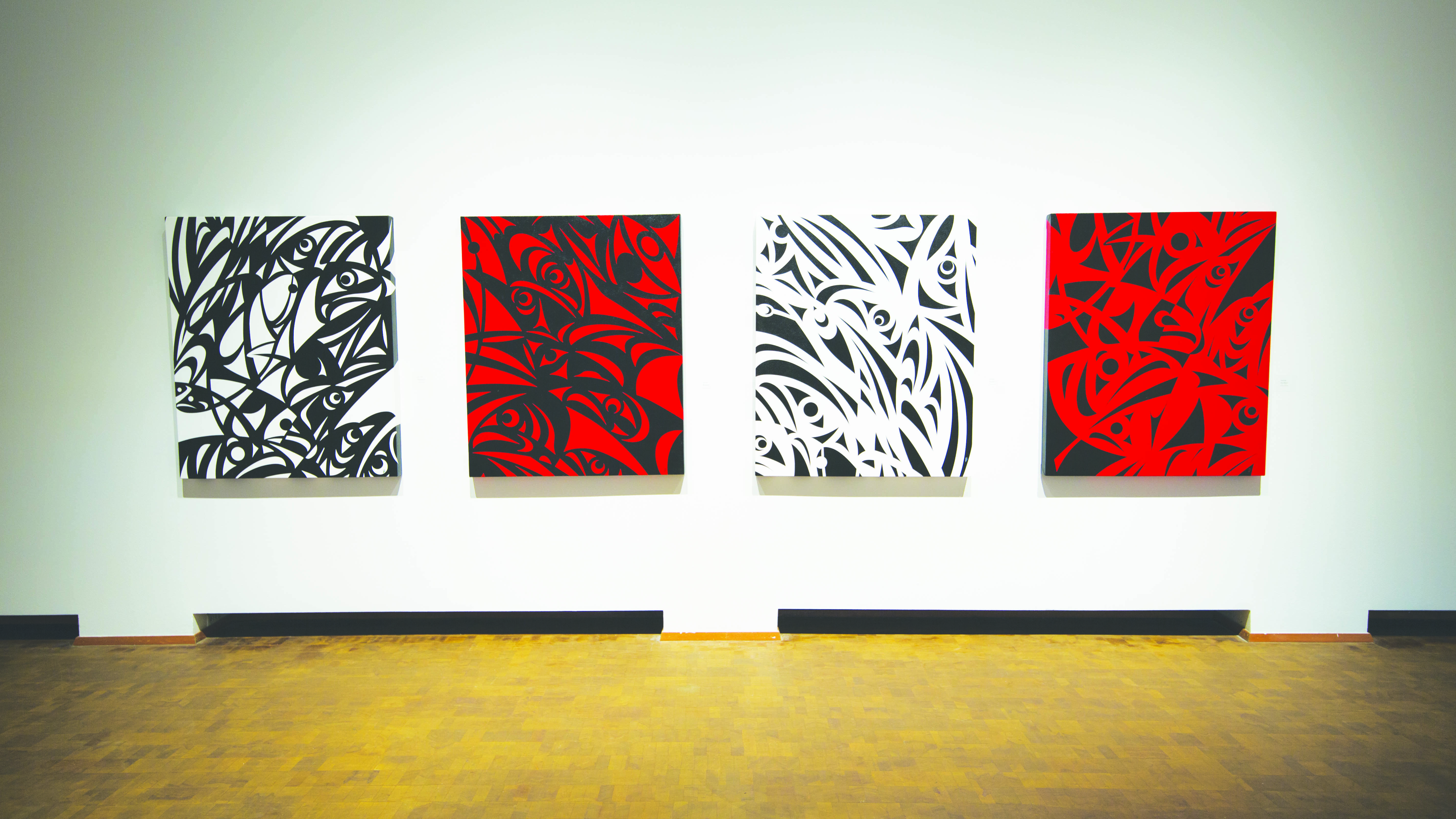By Josh Hughes
If you visit the Western Gallery any time from now until December 3, you’ll see an array of Northwest Native American art in a beautiful array of mediums and styles. Yet the stereotyped “traditional” arts of basketry, textile making, and archaic sculpture are nowhere to be found. Instead, the space is filled with geometric prints, meticulous glass circles, and vibrant bursts of color. Motifs and themes of Indigenous Northwest culture are scattered throughout, but are altered, magnified, or distorted in ways that boldly branch out of the stuff of history museums and Pike Place postcards.
The pieces on display are those of Susan Point, a Musqueam artist who is a renowned driving force in the revival of Coast Salish art. Her work combines deeply embedded Coast Salish culture with a contemporary outlook, resulting in pieces that simultaneously pay respect to her heritage and draw from the past, as well as rejuvenate the art form and look ahead towards where Coast Salish art can go in the future.
Her work challenges the limitations imposed on her both from within and outside the culture. While she progresses and expands upon the traditional design elements of Coast Salish art, she also forces the viewer to look at her art as something distinctly contemporary, questioning what Coast Salish art would look like today had their culture never been colonized and nearly wiped out. While this makes Point’s art subversive, it still functions effectively under many different contexts. Seeing majestic glass spindle whorls with delicately placed designs doesn’t require that the viewer has a knowledge of the culture to appreciate its power as artwork. This makes Susan Point’s work even more powerful and singular in the way that she bridges the unspoken gap between western, European “art” and Native American “craft”. It makes her art culturally charged no matter how a viewer perceives her work.
Her work in the Western Gallery consciously embraces contemporary mediums, giving it the power to reach people from within her own community as well as in the general public. While the Northern formline style has dominated much of contemporary Native American art from this region, Point revels in Coast Salish design, something that hardly anyone else has done until the 1980’s. Her work actively rejects the idea that her culture’s art is dying and instead proposes that it is thriving more than ever with its acceptance of contemporary media and openness to evolution.
While Point herself is not speaking at the gallery, the exhibit has created a platform for other Coast Salish artists and figureheads to speak at. Glass artist Raya Friday, master weaver Ed Carriere, archeologist Dale Croes, and artist Debra Sparrow have already given demonstrations and talks at the gallery, but there will continue to be events throughout the quarter. On Thursday, October 27 at 5 p.m., master carver Jewell Praying Wolf James of Lummi Indian Nation will be giving a lecture talking about his work and the way it has complemented his environmental activism throughout the years.
On Thursday, November 17 at 5 p.m., master weaver Susan sa’hLa mitSa Pavel will also be giving a lecture about her working relationship with master weaver Bruce Miller and the importance of traditional apprenticeship.
Susan Point’s exhibit comes to Western at a crucial time when Native Peoples’ rights and culture are constantly being threatened and encroached upon. With issues like the Dakota Access Pipeline coming to national attention, her work strengthens the importance and significance of similar and disparate Native American cultures across the country. Her images and designs convey ideas centered around culture, identity, perseverance, adaptation, and
much more in ways that words cannot do justice. Be sure to check out her work at the Western Gallery in the Fine Arts Building before it closes on December 3.


